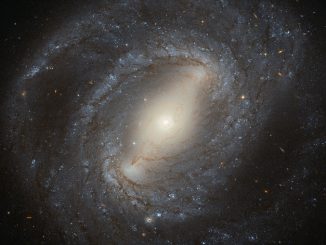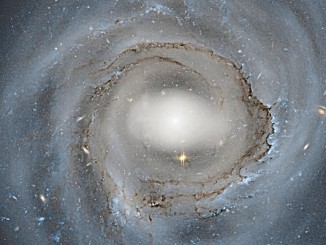
A ringside seat for a slow-motion galactic train wreck
The Hubble Space Telescope captures a snapshot of a collision between two galaxies 350 million light years away in the constellation Cetus, giving astronomers a ringside seat to a slow-motion merger that eventually will result in a single combined galaxy. Gravitational interactions are distorting the barred spirals, ripping away stars and dust.





